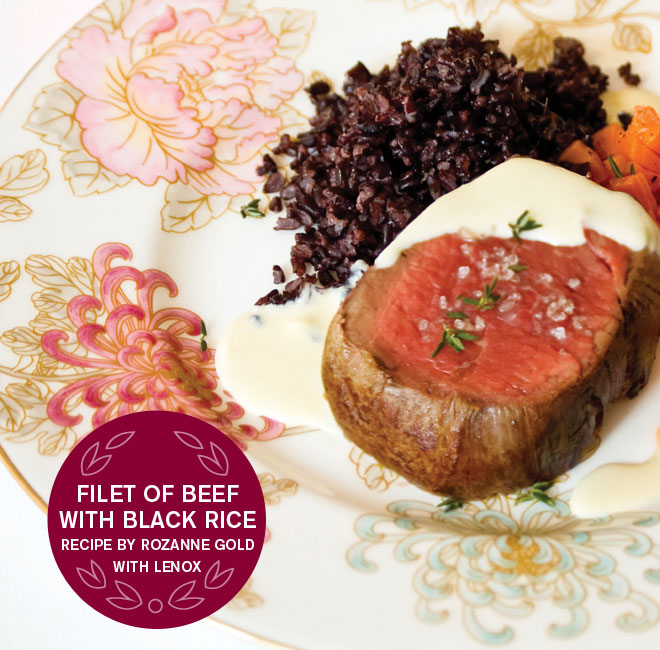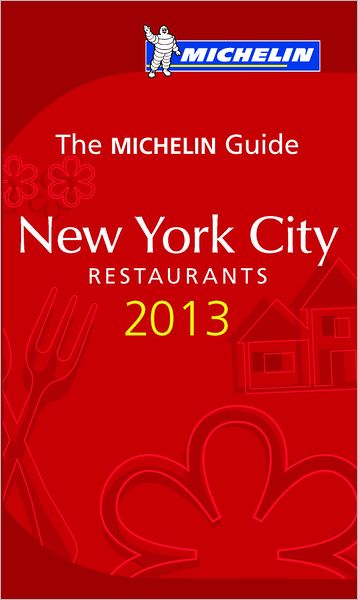Whether you are hosting an Oscar party tomorrow night or simply want to make yourself a festive feast, here are some recipes that I put together for Lenox that are sure to delight.
 SMOKED SALMON HORS D’OEUVRES
SMOKED SALMON HORS D’OEUVRES
Here, three simple ingredients become bite-size luxuries: smoked salmon rosettes and smoked salmon pinwheels. Festive and sophisticated, these are the perfect match, in flavor and color!
ROSETTES
- 1 hothouse cucumber - 8 ounces best-quality, thinly sliced smoked salmon - 1/2 cup whipped cream cheese
Wash cucumber but do not peel; slice into 1/4-inch thick rounds, about 24. Slice the smoked salmon into 24 strips that are 1-inch wide by 3-inches long. Roll each piece loosely. Curl back the edges and flatten slightly so that it begins to look like a rose. Spread about 1 teaspoon of cream cheese on each cucumber slice and place rosette on top. Arrange on a platter.
MAKES 24
PINWHEELS
- 8 ounces best-quality, thinly sliced smoked salmon - 8 ounces cream cheese - 4 kirby cucumbers, sliced 1/4-inch thick
Put 2 slices of smoked salmon slightly overlapping. Spread with a thin layer of cream cheese to cover completely. Roll up like a jelly roll (beginning with short edge) and place in a piece of plastic wrap. Twist the edges so that you have a small tight sausage shape. Chill well. Slice thinly and place a slice on a cucumber round.
MAKES 24
SEARED SCALLOPS ON SWEET PEA PUREE
This is great any time of the year as frozen peas are always available. Trendy pea shoots can be found at this time of the year in many farmers markets. You can make the pea puree ahead of time and reheat while you’re cooking the scallops.
- 2 10-ounce packages of frozen petits pois - 8 tablespoons unsalted butter - 18 very large sea scallops - 6 tablespoons dry vermouth - Handful of pea shoots or microgreens
Put the peas in a saucepan with salted water to just cover. Boil 2 minutes. Drain well and save 3/4 cup cooking liquid in a blender. Process until very smooth and thick (adding more liquid if necessary.) Add salt and pepper and return to saucepan.
Melt 2 tablespoons butter in a large frying pan. Season scallops with salt and pepper and sear over high heat for 2 minutes per side, until golden and cooked through. Reheat pea puree until hot; spoon a mound onto each of 6 warm plates. Arrange 3 scallops on puree.
Add the vermouth and the remaining 2 tablespoons butter to the pan. cook 30 seconds over high heat until syrupy. Pour over scallops and top with pea shoots.
SERVES 6
 FILET OF BEEF WITH WASABI-GARLIC CREAM
FILET OF BEEF WITH WASABI-GARLIC CREAM
Kiss your butcher and ask him (or her) to cut you a nice 3-pound filet of beef and tie it like a roast. You can buy wasabi paste in a tube in most supermarkets and Asian food stores.
Serve with black rice tossed with a bit of grated ginger and your favorite vegetable: I’ve chosen diced carrots sauteed in sweet butter with fresh thyme.
- 2 tablespoons olive oil - 3-pound filet of beef, tied - 1 tablespoon sugar - 1 1/2 cups heavy cream - 2 very large garlic cloves, peeled and smashed - 1 tablespoon prepared wasabi
Preheat the oven to 425 degrees. Drizzle the oil on a rimmed baking sheet and toll the beef in the oil. Combine the sugar and 1 tablespoon kosher salt. Rub into the top and sides of the filet (but not the bottom or it will burn.) Roast 25 minutes, until an instant-read thermometer reaches 125 degrees for rare. Meanwhile, bring the cream and garlic to a boil in a saucepan. Reduce the heat and cook stirring until reduced to 1 cup, about 15 minutes. Push the softened garlic through a press; whisk back into the sauce. Add the wasabi, cook 1 minute, and remove from the heat. Add salt. Transfer the beef to a cutting board. Let rest 10 minutes. Gently reheat the sauce. Remove the strings from the beef and thickly slice.
Serve with the sauce.
SERVES 6
AWARD-WINNING CHOCOLATE MOUSSE CAKE
This is the world’s simplest and moistest cake: just be sure to remove it from the oven while the center is still quite soft. Edible gold leaf is available in food stores specializing in Indian food products and in specialty baking shops.
- 10 1/2 tablespoons unsalted butter - 5 extra-large eggs - 16 ounces best-quality semi-sweet chocolate - 1 teaspoon vanilla extract, espresso powder, or fresh orange zest - 2 pints fresh raspberries, washed and dried - A few sheets of edible gold leaf, optional
Preheat the oven to 375 degrees. Line the bottom of a 9-inch springform pan with parchment paper. butter the sides of the pan with 1/2 tablespoon butter. Using an electric mixer, beat the eggs with a pinch of salt until tripled in volume, about 8 minutes. Melt the chocolate with the remaining 10 tablespoons butter slowly over low heat in a medium saucepan; stir until smooth. Fold the chocolate mixture into te egg mixture with a flexible rubber spatula until completely incorporated. Add the vanilla (espresso or orange zest). Pour into the pan. Bake 18 minutes; the center will be quite soft. Let cool. Arrange the raspberries side by side on top of the cake. Top with gold leaf, if using.
SERVES 8

